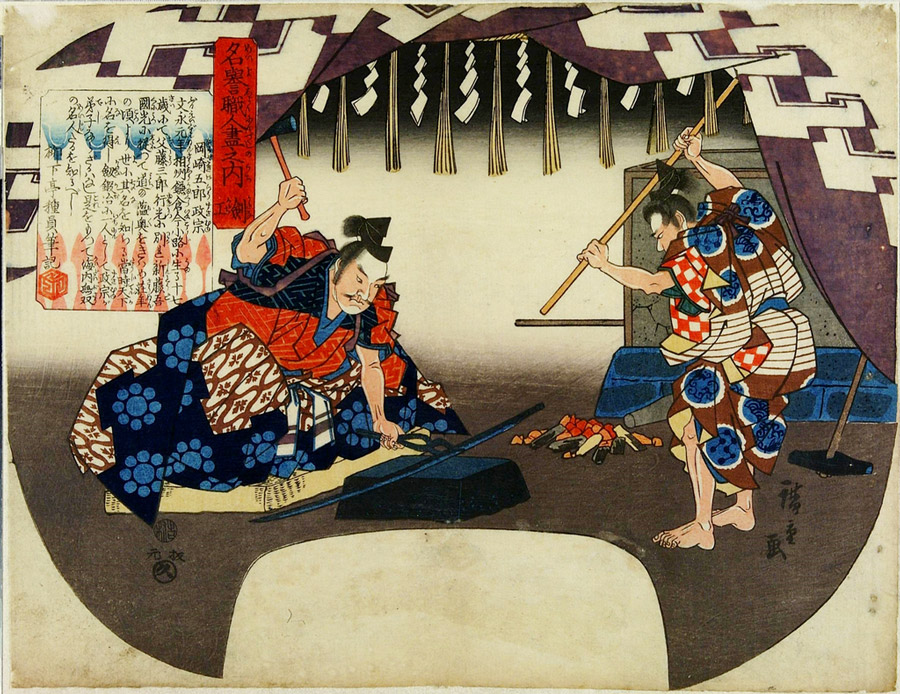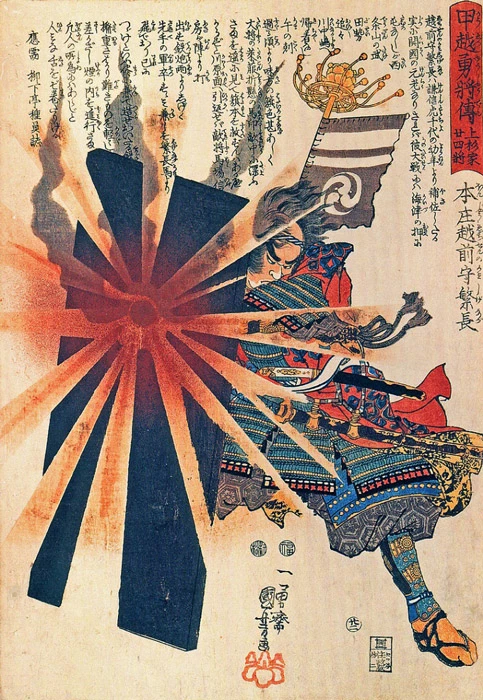Time and again in mythology a hero is associated with his armor and weaponry, with the weapons themselves often as famous as the hero. Whether it is Arthur with his sword Excalibur, the shield of Achilles or the weapons given to Perseus to slay the gorgon Medusa, they are seen as a defining characteristic and play a key role in the story.
But sometimes it is the weapon itself that is the focus, far and above its custodians or those who wielded it. Sometimes the weapon is so finely crafted, flawless and perfect, that it transcends the stories. So it was with the Honjo Masamune.
More fascinating still is that this is not some tale of a magical weapon from a far-off, mythical time and place. The Honjo Masamune was a real sword, lost not in antiquity but in the comparatively recent past. It is among the greatest lost treasures of the world.
This is its story.
Gorō Nyūdō Masamune
A sword of such quality could only come from an exceptional craftsman, and so it was with the Honjo Masamune. Gorō Nyūdō Masamune was a renowned medieval Japanese swordsmith, probably the greatest in the history of Japan. He created a number of daggers and swords during a 40 year career between 1288 and 1328.
Masamune was based in Sagami Province during the final years of the Kamakura shogunate, a period that saw the rise of a warrior caste known as the samurai. In an era where steel production was still an imperfect art, he was able to produce exceptionally clean and flawless materials in his forge, crafting swords known for their superior quality and the beauty of their form.
Even in modern Japan, an award called as Masamune Prize is presented to the swordsmiths with exceptional work at the Japanese Sword Making Competition. It speaks a lot about the reputation of Gorō Nyūdō Masamune as one of the finest swordsmiths in Japan, resonating down the centuries.

And of all the swords produced by this great master 700 years ago, the Honjo Masamune is likely to be the greatest. This samurai sword was considered to be almost perfect in design, and was a symbol of national pride for the Japanese.
Just like the other swords made by Masamune, the blade pattern of Honjo Masamune was created through careful and repeated hardening of the metal. It had a single edge and a curved blade. Records as to the measurements of the sword differ from source to source, but it is believed that the sword’s length was 25.6 inches (65 cm), with a curvature of just 0.6 inches (1.5 cm).
- Where Truth Meets Legend: Was Jimmu the First Emperor of Japan?
- Ishikawa Goemon: The Japanese Robin Hood?
Masamune was never a proud man and left most of his works unsigned, but some believe he may have made an exception for this sword. However this signature may still be lost due to changes made to the blade during its long life.
Passed on from one generation to another for nearly seven hundred years, it is considered a national treasure of Japan. Today, the worth of the Honjo Masamune sword is some millions of dollars, and despite its loss many experts believe that the sword may be still out there.
The Sword of Legends
There are several legends associated with the Honjo Masamune sword. One of the popular legends involves a competition between Masamune and his great rival, Sengo Muramasa.
Masmune was known for making swift, balanced blades with exceptional poise and agility. On the other hand, the work of Muramasa was quite aggressive and designed the bludgeon the opponent into submission.
The swordsmiths competed with each other in order to determine who was able to make the best sword. Masamune selected Honjo Masamune for the competition with his rival. Both the Honjo and the sword made by Muramasa were suspended over steam to test the quality of the swords.
The blade made by Muramasa was seen to be able to cut everything that comes in touch with it. Whether it was the fish or the leaves, the blade cut everything. On the other hand, the sword made by Masamune was able to only cut through leaves, and seemed to bounce off fish.
Muramasa gloatingly concluded that his sword was indeed better than that of Masamune. However, a passing monk was watching them. He declared that the sword made by Masamune was superior because it did not cut anything for no good reason, as was the case in harming the fish.
The sword of Muramasa that cut everything, by way of contrast, was seen as symbolic of evil and blood-thirsty nature. This led to another legend in which people believed that the swords of Muramasa, once unsheathed, had to taste blood before they could be sheathed once more.
The Sword in History
While such tales are maybe apocryphal, the sword certainly had many famous owners in its long history. It was passed down the line of ruling Shoguns during the famous Japanese Edo period, where it become symbolic of rulership.
- The Story of Utsuro-Bune: a 19th Century Japanese UFO?
- Land of the Rising Sun: Did Jesus Retire To Rural Japan?
Perhaps its most famous owner may also be the man who gave the sword its name, the great samurai general Honjo Shigenaga. In 1561 during a battle at Kawanakajima, located near the present day city of Nagano, a warrior attacked Shigenaga with the sword.

Bested in combat, the sword sliced Shigenaga on his head and cleaved his helmet into two halves. Recovering, Shigenaga retaliated and killed the warrior who attacked him, taking the sword for himself.
Later, Shigenaga desperately needed money and had to sell the sword. The sword went into the hands of the Tokugawa family, the rulers of Japan for more than 250 years. From there the sword was passed from one generation to another, treasured for centuries. It gradually was seen as a symbol of Tokugawa Shogunate, and was preserved until the Second World War, being declared a Japanese National Treasure in 1939.
The Loss of Honjo Masamune
The Honjo Masamune sword remained in possession of the Tokugawa family until the end of the Second World War. After Japan surrendered, all the sword collections of the royal families were handed over to the Allied forces.
Tokugawa Iemasa willingly gave all the sword collection of the family, including Honjo Masamune. The collection was surrendered to a US sergeant named Coldy Bimore of the 7th US Cavalry Regiment.
However, later it was discovered that the man had used a fake name as there was no one named Coldy Bimore in that regiment. The Honjo Masamune, along with the other swords of the collection had been stolen. And it has been missing ever since.
Who was Coldy Bimore? The strange name offers no help, and the man could have come from almost anywhere. It is considered most likely that the sword, if not destroyed, was taken back to America and rests in private hands to this day.
Top Image: Will the greatest sword ever made be found one day? Source: Marc Andreu / Adobe Stock.
By Bipin Dimri